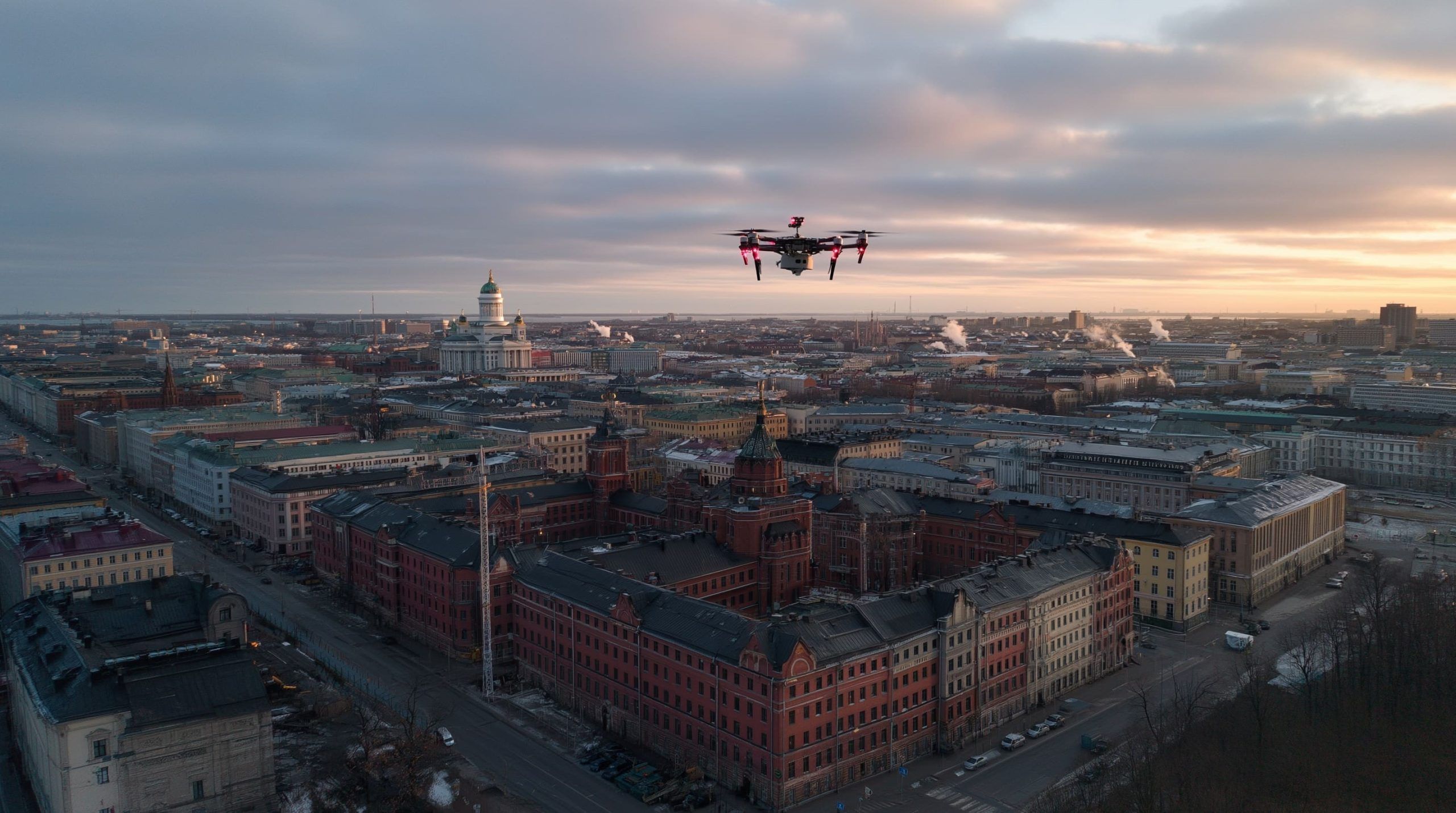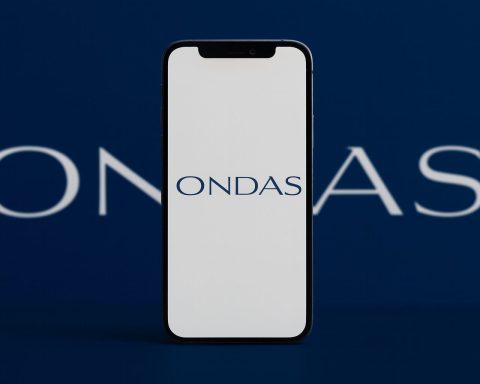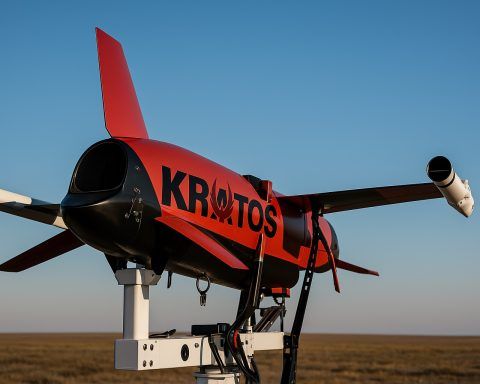- Finland adopted EU-wide EASA open category rules in 2021, applying them to Helsinki drone pilots.
- Recreational pilots must maintain visual line of sight (VLOS) at all times, with brief overflight of a person allowed only for sub-250g drones.
- The open category altitude limit is 120 meters above ground, with higher flights requiring Traficom permission.
- Drones over 25 kg are not allowed for leisure use.
- Drone operator registration with Traficom is mandatory if the drone weighs 250 g or more or has a camera, and one Operator ID covers all drones; registration typically costs about €30–€100 for 3–5 years.
- Minimum remote-pilot age is 16 under EU rules, with an online A1/A3 theory exam required for open category pilots, and an A2 certificate needed to fly closer to people.
- As of 2024, drones with class markings (C0–C6) must have Remote ID broadcasting locally, and drones operating in the Specific category must also have Remote ID.
- Insurance is mandatory for drones over 20 kg MTOM under EU rules; for smaller drones, liability coverage around €1 million is strongly recommended.
- Permanent no-fly zones (P) and restricted zones (R) exist, including protected areas like Suomenlinna and Kaartinkortteli, and temporary zones (TEMP-ROZ) can be declared for events.
- To operate outside open-category rules, you may need Traficom authorization for the Specific category, Defence Forces permission for restricted airspace, and Fintraffic ATC permission (often with at least five working days’ notice) to fly in controlled airspace near Helsinki-Vantaa (EFHK).
Recreational Drone Use Laws and Restrictions in Helsinki
Recreational drone pilots in Helsinki must follow the EU-wide EASA “open” category rules, which Finland adopted in 2021 [1]. In practice, this means hobbyists can fly without prior authorization if they stay within certain limits. Key rules include maintaining visual line of sight (VLOS) with the drone at all times and not exceeding 120 meters altitude above ground [2] [3]. Drones over 25 kg are not allowed for leisure use, and drones must never carry dangerous goods or drop items [4]. Importantly, you must avoid flying over uninvolved people and are strictly prohibited from flying over large crowds or assemblies of people [5]. Brief overflight of a person is tolerated only with small drones (sub-250g), but lingering or deliberate flight over crowds is forbidden for safety and privacy reasons. Recreational pilots should stick to sparsely populated areas or designated model airfields if practicing higher-risk maneuvers [6].
Every drone pilot is expected to follow “geographical zone” restrictions (more on that below) and respect local no-fly areas. Basic etiquette like not harassing wildlife or people applies – for example, avoid flying near bird nesting areas in spring (April–July) to prevent disturbing animals [7]. Finland’s general aviation law also requires yielding right-of-way to all manned aircraft: if a helicopter or plane approaches, the drone must immediately give way or land [8]. By adhering to these common-sense rules, recreational flyers can enjoy Helsinki’s skies legally and safely without any special permit.
Commercial Drone Operation Regulations and Licensing Requirements
Commercial drone operations in Helsinki are legal but subject to the same EASA risk-based categories as recreational flying [9]. In other words, Finland no longer differentiates hobby vs. commercial flights by default – instead, the rules depend on operational risk. Most low-risk commercial uses (e.g. real estate photography, film production) fall under the “open” category as long as you use a drone under 25 kg, stay within visual line of sight, under 120 m altitude, and away from crowds [10] [11]. No additional authorization is needed in those cases, even if you’re being paid, provided you follow the standard limitations [12]. However, commercial operators typically need to obtain a remote pilot competency just like hobbyists (see Registration Requirements below), and ensure their operation stays within subcategory rules (A1, A2, or A3) depending on how close to people or urban areas they fly [13]. For example, a professional photographer flying “close to people” with a heavier drone may need an A2 certificate of competency and must keep at least 30 meters distance from bystanders [14] [15].
If a business use-case cannot comply with open category restrictions – for instance, flying beyond visual line of sight (BVLOS), at night over people, using heavy payload drones, or other higher-risk scenarios – then it falls into the “specific” category, which requires prior operational authorization from the Finnish Transport and Communications Agency (Traficom) [16]. To get approval, the operator must perform a risk assessment (such as a SORA – Specific Operations Risk Assessment) or use a predefined risk scenario (PDRA) provided by EASA, and implement safety mitigations [17]. Only with Traficom’s authorization (or a submitted declaration for certain standard scenarios) may these advanced operations take place. For the highest-risk uses like drone deliveries over urban crowds or passenger transport (in the future), the “certified” category would apply, requiring a fully certified drone and licensed pilot similar to manned aviation [18].
In Finland, commercial drone pilots historically had to be adults – earlier guidelines set 18 years as the minimum age for professional drone pilots [19]. Under the EU framework, the standard minimum age for any remote pilot is 16 (individual countries can adjust this by a few years) [20]. In practice, most commercial operators in Helsinki are adults, and if younger pilots are involved, they must be supervised and properly certified. There is no separate “commercial license” beyond the category certifications; however, companies may need to train pilots to a higher standard (e.g. obtaining an A2 or Specific Category authorization) depending on the complexity of the operations. Additionally, while not universally mandated for small drones, liability insurance is strongly recommended for commercial flights – many clients or authorities expect operators to have coverage (Finland suggests at least €1 million coverage for drone operations) [21]. In fact, EU rules require mandatory insurance for any drone over 20 kg MTOM [22], and even for lighter drones it’s wise for businesses to insure in case of accidents. Commercial drones should also be labeled with the operator’s contact information (name, phone number) on the airframe for identification [23], which is often done by affixing the official operator registration number (more on that next).
Drone Registration Requirements in Finland
Drone operator registration is a cornerstone of Finnish and EU drone laws. If you reside in Helsinki (or anywhere in Finland) and own or fly a drone, you likely need to register with Traficom as a UAS operator before flying. Specifically, any drone weighing 250 grams or more, OR any drone (regardless of weight) that is equipped with a camera or can capture personal data, requires the operator to register [24]. This means even a hobby drone under 250g (like a DJI Mini) needs registration if it has a camera on board, since it can record personal data (exceptions exist for certain toy drones). Flying unregistered is illegal – operating a drone without the required registration can result in an aviation violation charge [25]. As of 2025, over 17,800 Finnish drone operators have registered, indicating how seriously this is taken [26].
Registration in Finland is done online via Traficom’s Droneinfo e-service portal. Upon registering, you receive an Operator ID (a unique identification code) that must be affixed to every drone you fly [27]. This ID acts like a drone “license plate” linking the aircraft to you as the accountable operator. Notably, you register once (with a fee of around €30–€100 for a 3–5 year period, according to user reports) [28], and the same operator ID covers all your current and future drones – there is no need to register each drone separately in Finland [29]. The registration is valid across the EU, so a Finnish-registered operator can fly in other EU countries under the same ID [30].
In addition to registration, most pilots must pass an online theory exam to be certified for the open category. This is often referred to as the A1/A3 drone pilot competence test. It covers basic aviation safety, airspace rules, and privacy, and is available through Traficom’s website (in multiple languages). Upon passing, you receive a certificate of competency which you should carry (digitally) when flying. This is mandatory for anyone operating in subcategory A1 or A3 (which includes virtually all drones >250g) [31] [32]. For subcategory A2 (flights “close to people” with mid-weight drones), an additional exam and a practical self-training declaration are required [33] [34]. The only people exempt from the test are those flying very small toys under 250g with no camera, or those always flying in the model club context under specific conditions. Always ensure your registration and pilot competency are up to date before flying – Traficom has even reminded pilots to check that their operator registration hasn’t expired and is renewed on time [35].
Geofencing and Restricted/No-Fly Zones in Helsinki
Helsinki and its surrounding region feature several no-fly zones and restricted areas that drone pilots must heed. These are established for security, safety, or defense reasons. Relying on your drone’s built-in geofencing alone is not enough – manufacturers’ maps might not include all local restrictions, and they do not excuse violations [36]. Every pilot should check official sources (like Traficom’s maps or the Flyk drone map service) before each flight for any active restricted airspace [37].
Permanent prohibited areas (P) and restricted areas (R) are defined by a Finnish government decree. In prohibited (P) zones, all civil aviation – including drones – is forbidden outright (only state aircraft can fly there) [38]. These typically include sites like nuclear power plants, military bases, key government buildings, and critical infrastructure. Restricted (R) zones are areas where aviation is restricted or requires special clearance, often around military installations or sensitive locations. For example, parts of Helsinki’s city center near government buildings or military facilities fall under such restrictions. Suomenlinna island (a naval fortress off Helsinki) and the Kaartinkortteli area (site of the Defence Forces HQ) are specifically cited as zones where aerial photography and drone surveillance are prohibited without authorization [39]. Flying a drone over these protected areas, or taking photos of defense installations from the air, is illegal without a permit from the Finnish Defence Command [40].
Beyond fixed no-fly zones, authorities continuously issue temporary airspace restrictions (TEMP-ROZ) for events like state visits, large public gatherings, or emergency/security operations. For instance, when a high-profile dignitary visits Helsinki, a temporary no-drone zone might be set up over venues – as happened during a U.S. Presidential visit in 2023, when police established and enforced a drone ban around the Market Square and Finlandia Hall area [41] [42]. These temporary restrictions are published via official Notices (NOTAM/AIP SUP) and can be viewed on the AIS website or depicted on FLYK maps [43]. Pilots must stay updated; flying in a temporary restriction will lead to immediate intervention (and indeed, Helsinki police actively monitor and will intercept any drone incursions during such events) [44] [45].
Special rules apply to airports and controlled airspace. Helsinki’s main airport (Helsinki-Vantaa, EFHK) has a busy controlled traffic region (CTR) covering a large part of the metro area. To protect manned aircraft, UAS geographical zones around airports have replaced the old fixed 5 km no-fly circles since 2020 [46]. Now, drone flights near airports are allowed only under strict conditions: essentially, the closer you are to runways, the lower you must fly without needing explicit permission. As a rule of thumb, no drone operations are allowed within 1 km of an airport runway without special ATC permission [47]. Between 1 km and ~3 km out, only very low-altitude flights (e.g. under 15 m or below nearby building heights) are allowed, and beyond 3 km within the CTR a 50 m height limit applies [48]. At Helsinki Airport specifically, authorities rarely grant any exceptions beyond these rules due to heavy air traffic [49]. If a drone pilot needs to fly higher or closer (e.g. for infrastructure inspection near the airport), they must coordinate with Fintraffic Air Traffic Services well in advance – Helsinki ATC requires at least 5 working days notice for drone flight requests in the controlled zone [50]. Outside controlled airspace, smaller airfields and heliports around Helsinki also have localized UAS zones; pilots should consult aviamaps.com or Fintraffic AIS data for each site. Remember that flying above 120 m anywhere (even outside CTRs) requires Traficom’s permission by regulation [51].
Lastly, note the eastern border zone: Finland maintains an Air Defence Identification Zone (ADIZ) along the Russian border. If you were to fly near Helsinki’s eastern Uusimaa region (not far from the city in a broader sense), be aware that in the ADIZ you must file a flight plan at least 1 hour before flying [52]. A particular restricted border strip (area EFR100) adjacent to Russia’s border outright requires a special permit from the Defence Forces for any drone flight [53]. While this is more relevant outside Helsinki, it’s worth mentioning for completeness since Finland’s security concerns can impose unusual restrictions.
Bottom line: Helsinki drone pilots must familiarize themselves with no-fly zones – nuclear plants, oil refineries, military sites, diplomatic compounds, and airports are common sense places to avoid [54]. Use official maps (e.g. the FLYK map in English) to check airspace each time [55]. Ignorance of a zone is not an excuse, and geofence apps like DJI’s may not reflect the latest Finnish restrictions [56].
Privacy and Data Protection Issues Related to Drone Use
Finland places a high value on personal privacy, and this extends to drone operations. Drone pilots in Helsinki must be mindful of what they film and how they use that footage. Simply put: you cannot violate someone’s privacy or Finland’s data protection laws with your drone. There are a few layers to this:
Personal data (GDPR): If your drone is equipped with a camera or any sensor that can collect identifiable information (photos, videos of people, license plates, etc.), you must handle that data in compliance with privacy laws. This is one reason why even having a camera triggers the operator registration requirement – authorities want pilots to be aware of privacy obligations [57]. As an operator, you should avoid capturing footage of individuals in private settings without consent. While taking broad scenic shots is fine, publishing or sharing close-up images of people without permission is prohibited by Finnish law [58]. In Finland, it’s generally illegal to disseminate images of someone or their private property if they have a reasonable expectation of privacy. For example, you cannot post a drone photo clearly showing a person in their yard or a car’s license plate on social media without blurring or consent [59]. Pilots are expected to mask or blur faces and identifying details if such individuals inadvertently appear in their recordings [60].
Surveillance and sensitive sites: It is explicitly forbidden to surveil or photograph certain protected sites from the air. As mentioned, military zones are off-limits – you need special authorization from the Defence Command to take any aerial photos of military installations [61]. In Helsinki, areas like Suomenlinna that still have military functions and some government buildings are covered by this rule. Even outside military sites, you should not hover outside apartment windows or over backyards; doing so could be deemed an invasion of privacy or even harassment. Finland does not have a specific “peeping drone” law, but general privacy and criminal code provisions (e.g. regarding domiciliary peace) would apply if a drone is used to intrude on someone’s private space.
Data protection: If you are a commercial operator collecting imagery (e.g. for mapping or events), be aware of GDPR requirements – you may need to inform people if you record personal data and have a lawful basis to do so. Public areas are generally okay to film, but if you purposely record individuals, you assume responsibilities as a data controller. Traficom’s guidance on data handling urges pilots to think ahead about what they will do with recordings and to avoid “spreading” sensitive footage [62].
In summary, respecting privacy is not just polite – it’s the law. Fly in a way that minimizes capturing people without consent. Do not share footage of private individuals or sensitive locations openly. By following these guidelines, you both obey Finnish law and help maintain public trust in drones as a hobby and tool.
Penalties for Violations of Drone Laws
Breaking drone laws in Helsinki (and Finland generally) can lead to serious consequences. Finnish police and authorities have not hesitated to enforce the rules, and several cases illustrate the penalties:
- Fines: The most common immediate penalty is a fine for the operator. Many drone users have been fined on the spot for flying in prohibited areas [63]. For example, during an EU conference in Helsinki, police detected two illegal drone flights in a temporary no-fly zone and issued fines to those operators [64]. Fines in Finland for such aviation infractions can range from tens to hundreds of euros depending on severity. The police classify unauthorized drone flying as an “aviation violation,” and multiple violations could increase the penalty.
- Drone confiscation: Authorities have the power to confiscate your drone if it’s used unlawfully. The Helsinki Police explicitly warned that they will stop unauthorized flights and can seize the drone as evidence or to prevent further misuse [65]. Losing an expensive drone is a steep price to pay, so it’s wise to stay within legal bounds.
- Criminal charges: Particularly egregious violations may result in criminal prosecution. In the Finlandia Hall incident, police noted that in addition to a fine, an offence report may be forwarded to the state prosecutor for further action [66]. Flying recklessly (e.g. endangering manned aircraft or people on the ground) could potentially lead to charges like endangering aviation safety. While jail is unlikely for typical cases, a court could impose larger fines or other sanctions on a drone pilot who causes an accident or persists in violating the rules.
- Liability for damages: If your drone causes injury or property damage, you are liable for the costs. This is civil liability, but it pairs with legal penalties. It’s one more reason why having insurance is prudent – without it, an incident could be financially devastating in addition to any fines.
Enforcement has ramped up especially after 2020, when police were given clearer authority to intervene in unlawful UAS operations. In practice, Helsinki Police actively patrol and use technical means to detect drones in restricted airspace (such as around events or airports). If you’re caught, expect at minimum a discussion with officers, and likely a fine. All registered operators’ info is in a database, so if your drone’s operator ID is visible or its remote ID broadcasts (a new requirement), authorities can trace it back to you. Bottom line: The penalties – from fines to confiscation – underscore that these rules are not optional. Fly responsibly to avoid any run-ins with the law.
Procedures for Obtaining Special Permits
There are scenarios where a drone pilot may need to go beyond the standard permissions – for example, to fly in a restricted zone, above altitude limits, or conduct high-risk operations. In such cases, special permits or authorizations are required. Here’s how to navigate them:
- Flying in Prohibited/Restricted Areas: If you have a compelling need to fly in a Prohibited (P) area, you must apply to Traficom for permission. Traficom can grant exceptions for special reasons (for instance, a research project in an otherwise banned area), but these are rare [67]. For Restricted (R) areas, the authority is the Finnish Defence Forces – you must seek a permit from the Defence Forces to enter an R area with your drone [68]. The process typically involves explaining the purpose of your flight, the time and exact location, and how you’ll ensure safety and security. For example, a film crew wanting to shoot near a military facility might need to coordinate with the Defence Command and abide by any conditions they impose. Expect bureaucracy – such requests should be filed well in advance.
- Authorization for Specific Category Operations: When your intended flight falls under the “specific” risk category (i.e. you cannot meet open category limits), you need to obtain an operational authorisation from Traficom. The steps generally include performing a risk assessment (using SORA methodology) and submitting it with an application detailing your operations, drone specs, pilot qualifications, etc. [69]. Traficom may also accept operations under a published PDRA (Pre-Defined Risk Assessment) if your use-case matches one (for example, a standard scenario for BVLOS mapping in sparsely populated areas). If so, you might just submit a declaration referencing the PDRA rather than a full risk study. Traficom reviews applications and will either grant an authorization with specific conditions or request further mitigation measures. Only once you have the written authorisation can you legally proceed with that operation. If your organization expects to do many such operations, you can even pursue a Light UAS Operator Certificate (LUC) which, once obtained, allows you to self-authorize certain operations internally [70] – but a LUC requires demonstrating a very high level of safety management and experience.
- Flying in Controlled Airspace / Near Airports: As noted earlier, to exceed default limits in an airport’s zone, you need permission from Fintraffic Air Traffic Services. The procedure is to submit a drone flight application to the airport’s ATC unit. For Helsinki-Vantaa, this must be done 5 weekdays in advance [71] and include details of when, where, and how high you intend to fly. You can file these applications via an online portal (Fintraffic SkyUAS) or a specific form with a map attached [72]. ATC will evaluate if the drone operation can be accommodated. They might approve it with certain time windows or altitudes, or they might deny/propose adjustments if it conflicts with manned traffic. Even with ATC permission, the drone pilot remains responsible for avoiding other aircraft and following any additional rules (like needing a spotter, using a phone line to stay in contact during the flight, etc.) [73] [74]. Note: Operating above 120 m anywhere in Finland requires Traficom’s sign-off too [75], so flights in controlled airspace often require dual permission – from Traficom (if altitude >120 m or otherwise outside open category) and from ATC if near an airport.
- Permits for Special Events (Organizers): If you are organizing an event in Helsinki and want to restrict drones (for example, a concert where you want a drone no-fly zone for safety), you can apply to Traficom to establish a UAS Geographical Zone restriction for the event. Traficom’s Droneinfo site provides a process for event organizers to request temporary restricted zones [76]. This isn’t a permit to fly, but rather a permit to ban others from flying in a certain area and timeframe (often done for VIP visits, sports events, etc.). As an organizer you’d coordinate with authorities to get the restriction published.
When seeking any special permit, plan ahead and allow plenty of lead time. Be prepared to justify why the operation cannot be done under normal rules, and what precautions you will take. If granted, carefully follow all conditions of the permit. For example, a permit to fly in a restricted zone might be valid only at a certain altitude or timeframe, or require a radio contact with ATC. Deviating from permit conditions is treated as a violation. In summary, exceptions are possible in Helsinki’s drone scene – but they are tightly controlled. Always engage with Traficom or the relevant authority well before any exceptional flight.
Safe Flying Guidelines for Helsinki Drone Pilots
Whether you’re a newbie hobbyist or a seasoned commercial operator, adhering to safe flying guidelines is crucial. These best practices not only keep you legal but also greatly reduce the risk of accidents:
- Keep it in sight: Always maintain a direct visual line of sight (VLOS) to your drone [77]. Avoid relying solely on a video feed. If you use FPV goggles, have a spotter next to you who can eyeball the drone. Flying beyond visual line of sight without special approval is not allowed.
- Stay under 120 m altitude: Respect the 120-meter (≈400 ft) altitude limit in open category operations [78]. This keeps you clear of most manned aircraft traffic. Only exceed this height with specific permission (rarely given) [79]. Use your drone app’s altitude readout and consider setting geo-fences to avoid unintentionally going too high.
- Avoid people and property: As a rule, do not fly over people who are not involved in the operation [80]. Always keep a safe horizontal distance. For small drones in category A1, you should still avoid overflying anyone if possible. For larger drones (A2/A3), maintain significant distance – e.g. dozens of meters for A2, at least 150 m from residential or gathering areas for A3 flights [81] [82]. In crowded city areas, find an open space or wait for a quiet time. Never fly over open-air assemblies like concerts, protests, or busy streets – that’s illegal and dangerous.
- Mind the no-fly zones:Check airspace restrictions before every flight [83]. Use official sources like the FLYK map or Droneinfo’s airspace tool. Remember that some restricted zones might not be obvious – for instance, Helsinki has certain government buildings protected, and temporary restrictions pop up periodically. Steer clear of airports (keep well outside their controlled zones unless you have permission) and heliports/hospital landing pads. When flying along the coast, be cautious of naval or border guard areas. If unsure, don’t fly there.
- Pre-flight check: Inspect your drone and gear before takeoff. Especially after long periods of no use (like over the winter), batteries should be checked for health, firmware updated, propellers undamaged, and the drone’s geo-awareness function updated with current restriction data [84]. Calibrate the compass/IMU if needed. Verify that your operator ID label is attached to the drone fuselage where it’s easily visible [85].
- Weather and environment: Helsinki’s weather can change quickly. Do not fly in high winds, fog, heavy snow, or rain – these conditions can cause loss of control or signal issues. Be mindful of the cold as well; low temperatures can significantly reduce battery performance. In winter, ensure batteries are warm before flight and expect shorter flight times. Also, avoid flying near power lines, transmitters, or in areas with magnetic interference (downtown Helsinki has some buildings with rooftop transmitters that could affect your compass/GPS).
- Don’t fly while impaired: It should go without saying, but never fly a drone under the influence of alcohol or drugs. Treat drone piloting with the same seriousness as driving a car in this regard. Keep focused, and if you’re tired or unwell, save the flight for another day.
- Yield to emergency responders: If you see an ambulance helicopter, police helo, or any aircraft approaching, immediately descend and land or hover at a low altitude well out of their path [86]. Also, do not hover over active emergency scenes (fires, accidents) unless you have specific permission – rescue helicopters might be coming in low. By law, drones must not interfere with emergency response.
- Use common sense: Avoid flying in sensitive places like near kindergartens, schools during recess, or embassies, even if not explicitly listed as no-fly zones. Don’t chase animals or birds with your drone (this can be considered harassment of wildlife). If someone approaches you with concerns while you’re flying, be courteous – land and talk to them. Often a quick explanation can defuse a situation.
By following these safe-flying guidelines, you’ll not only comply with Helsinki’s drone laws but also contribute to a positive drone culture. Always remember: as a drone pilot, you are an ambassador for this technology – flying responsibly keeps the skies open for all.
Recent Updates to Finnish and EU Drone Laws Affecting Helsinki
The regulatory landscape for drones has evolved significantly in recent years. Here are some of the recent updates (as of 2024–2025) that impact drone operations in Helsinki:
- EU-Wide Rules & EASA Implementation (2020–2021): The biggest change was the introduction of harmonized EU drone regulations. On 31 December 2020, the European Commission’s drone regulations (EU) 2019/947 and 2019/945 took effect, which Finland adopted fully [87]. This replaced Finland’s older national rules (like the 150 m altitude limit and 5 km airport rule) with the EASA categories (Open/Specific/Certified) and 120 m standard altitude. It means Helsinki drone pilots now operate under the same framework as those in any EU city. The transition period allowed older drones without class markings and legacy national allowances to be used until the end of 2023. As of 2024, the transition is over – EU rules are fully in force.
- Drone Classification and New Drones (2024): Starting 1 January 2024, any new drone model sold in Finland/EU must have a class identification label (C0, C1, C2, etc.) in order to be flown in the open category [88] [89]. These CE labels indicate the drone meets certain technical standards and dictates which subcategory (A1/A2/A3) it can fly in. For instance, a C1 class drone (under 900g, with required features) can be flown over people (A1) with proper training [90], while a C2 drone (up to 4 kg) can fly “close to people” (A2) with additional certification [91]. Drones placed on the market before 2024 without a class mark can still be used, but they default to more restrictive subcategories (e.g. a 1.5 kg old drone must operate in A3 “far from people”) [92] [93]. For Helsinki operators, this means if you buy a new drone now, look for its class rating to know what operations you’re allowed to do.
- Remote ID Requirement (2024): Along with class markings, the EU has rolled out the requirement for Remote Identification. As of 2024, all drones that have a class label (C1 through C6) and all drones operating in the specific category must have an active remote ID broadcast [94]. Remote ID is like an electronic license plate signal your drone emits, allowing authorities to see an ID number and pilot location. Many newer drones (DJI Air 3, Mavic 3, etc.) have this built-in. While hobbyists don’t need to transmit over the internet, the drone must at least broadcast locally. Finland follows this rule – come 2024, if your drone should have Remote ID and it’s not enabled, you’d be flying illegally. (Home-built drones under 250g or older models in A3 might be exempt until 2026.)
- Electronic Drone Services (2024): Traficom has been improving its online services. In May 2024, they launched new electronic drone services for registration, pilot exams, and more [95]. This streamlines getting your operator ID and taking the theory test. They also updated the process so that as of late 2024, the A1/A3 online exam is free only when taken in conjunction with registering as an operator (to encourage serious sign-ups) [96].
- UAS Geographical Zones and U-space: Finland is slowly moving towards implementing “U-space” airspace for drones, though as of 2025 this is still in trial phases. However, Traficom has been actively designating UAS Geographical Zones. By end of 2020, they replaced the simplified old rules around airports with detailed zone maps [97]. In 2025, we’re seeing temporary UAS geo-zones announced for things like police operations (e.g. a temporary zone in Åland for police training in 2025) [98]. Pilots should monitor Droneinfo’s news for any Helsinki-specific UAS zones – for example, if a new permanent zone is established over a certain city area, it will be publicized there.
- Enforcement Powers (2020 onward): The Finnish Police Act was updated around 2020 to give police clearer authority to intervene in unlawful drone flights [99]. Police now use drone detection systems during major events in Helsinki and can issue instant fines (ticket-style) for certain violations. This isn’t a “law” change a pilot needs to follow, but it’s a change in how the laws are enforced – essentially a heads up that the grace period for ignorance is over.
- Local city regulations: While drone laws are national, Helsinki city has considered its own guidelines for recreational drone use in parks or city-owned land. As of 2025, no separate city ordinance widely prohibits drones (aside from following national law), but always check for any park-specific rules (some nature reserves or city stadiums may ban drones for safety/wildlife reasons even if not federally listed). Any such local rules would typically be posted on-site or on the venue’s website.
All these updates mean that flying in 2025 is a bit more structured than a few years ago – pilots have more responsibilities in terms of equipment compliance (Remote ID, class marks) and preparation (registration, tests), but also more clarity with a single set of EU rules. Keep an eye on Traficom’s Droneinfo site for news. Laws can evolve as drone technology advances, so staying up-to-date is part of being a responsible drone operator.
Summary of Key Drone Regulations and Requirements (Helsinki, 2025)
| Regulation/Aspect | Key Requirements in Helsinki/Finland |
|---|---|
| Drone Registration | Mandatory for all operators flying drones ≥250 g or with a camera [100]. Register with Traficom to get an Operator ID; label this ID on your drone [101]. No per-drone registration needed, one ID covers all your drones. Flying unregistered is illegal [102]. |
| Pilot Licensing/Competency | Open category pilots must pass an online theory exam (A1/A3 certificate) unless flying only a sub-250g toy [103]. Additional A2 certificate required to fly closer to people with mid-weight drones [104]. Minimum pilot age 16 (per EU rules; younger only with supervision). No separate “commercial license,” but specific operations require authorization. |
| Max Altitude | 120 meters above ground [105] standard limit in open category. Higher flight (up to 150 m or more) only with special permission from Traficom [106]. Helsinki’s control zones often impose lower local altitudes (50 m or 15 m near airports) without permission [107]. |
| Airspace & No-Fly Zones | Drones must not fly in prohibited or restricted areas (military bases, power plants, etc.) without a permit [108]. Around Helsinki-Vantaa Airport, no drones within 1 km; 1–3 km zone limited to 15 m height; 3+ km within CTR limited to 50 m [109] unless ATC clearance obtained [110]. Temporary no-fly zones are announced for events – always check latest NOTAMs/Droneinfo [111]. |
| Operational Restrictions | Always fly VLOS (or use a co-located observer for FPV) [112]. No flying over assemblies of people [113]. Avoid intentional overflight of uninvolved persons and keep safe distances (≥50 m, or 150 m for A3 category operations in rural areas). Give way to all manned aircraft – land if one approaches [114]. No dropping objects or carrying dangerous goods [115]. |
| Privacy & Data Protection | Respect privacy: do not film people at close range or private areas without consent [116]. Publishing identifiable images (faces, license plates) without permission is prohibited by Finnish law [117]. Aerial photography of sensitive government or military sites requires special authorization [118]. Comply with GDPR when handling any recorded data. |
| Insurance | Required by law for drones over 20 kg MTOM (per EU insurance regulation) [119]. For drones <20 kg, insurance is highly recommended – commercial operators in practice need liability coverage (≈€1 million recommended) [120]. Many clients/permits will insist on it. |
| Enforcement & Penalties | Helsinki Police actively enforce drone laws. Violations can incur on-the-spot fines [121]. Serious breaches may lead to investigation/prosecution [122]. Police can stop flights and confiscate drones flown in restricted areas or used irresponsibly [123]. Flying unregistered or without required competency is considered an aviation offense. |
| Special Permits | To fly outside the rules: Traficom authorization needed for specific category ops (higher risk) [124]. Permit from Defence Forces required to enter military restricted airspace [125]. ATC permission required to fly in controlled airspace near airports beyond default limits (apply ≥5 days in advance for EFHK) [126]. Always obtain written permission and comply with its conditions before such operations. |
| Useful Resources | Official info at Droneinfo.fi (Traficom’s portal). Use Flyk map [127] or dronekartta/aviamaps for airspace maps. For questions, contact Traficom (kirjaamo@traficom.fi) or Helsinki Police for local enforcement queries. |
By following the above regulations and guidelines, drone pilots in Helsinki can enjoy flying while staying compliant. Always stay informed of current rules – as drone technology and laws continue to develop, keeping knowledge up-to-date is essential for safe and legal drone operations [128]. Fly safe and have fun exploring Helsinki from the sky!
References
1. drone-laws.com, 2. drone-laws.com, 3. uavcoach.com, 4. drone-laws.com, 5. drone-laws.com, 6. drone-laws.com, 7. traficom.fi, 8. www.reddit.com, 9. www.reddit.com, 10. drone-laws.com, 11. drone-laws.com, 12. droneinfo.fi, 13. drone-laws.com, 14. drone-laws.com, 15. drone-laws.com, 16. droneinfo.fi, 17. droneinfo.fi, 18. droneinfo.fi, 19. uavcoach.com, 20. drone-laws.com, 21. drone-laws.com, 22. www.droneinfo.fi, 23. uavcoach.com, 24. traficom.fi, 25. traficom.fi, 26. traficom.fi, 27. traficom.fi, 28. www.reddit.com, 29. traficom.fi, 30. traficom.fi, 31. drone-laws.com, 32. drone-laws.com, 33. drone-laws.com, 34. drone-laws.com, 35. traficom.fi, 36. droneinfo.fi, 37. droneinfo.fi, 38. droneinfo.fi, 39. droneinfo.fi, 40. droneinfo.fi, 41. poliisi.fi, 42. poliisi.fi, 43. droneinfo.fi, 44. yle.fi, 45. poliisi.fi, 46. droneinfo.fi, 47. uavcoach.com, 48. uavcoach.com, 49. www.fintraffic.fi, 50. www.fintraffic.fi, 51. www.fintraffic.fi, 52. droneinfo.fi, 53. droneinfo.fi, 54. droneinfo.fi, 55. www.reddit.com, 56. www.reddit.com, 57. traficom.fi, 58. www.reddit.com, 59. www.reddit.com, 60. www.reddit.com, 61. droneinfo.fi, 62. www.droneinfo.fi, 63. poliisi.fi, 64. yle.fi, 65. poliisi.fi, 66. yle.fi, 67. droneinfo.fi, 68. droneinfo.fi, 69. droneinfo.fi, 70. droneinfo.fi, 71. www.fintraffic.fi, 72. www.fintraffic.fi, 73. www.fintraffic.fi, 74. www.fintraffic.fi, 75. www.fintraffic.fi, 76. droneinfo.fi, 77. uavcoach.com, 78. drone-laws.com, 79. www.fintraffic.fi, 80. drone-laws.com, 81. drone-laws.com, 82. drone-laws.com, 83. droneinfo.fi, 84. traficom.fi, 85. traficom.fi, 86. www.reddit.com, 87. drone-laws.com, 88. droneinfo.fi, 89. traficom.fi, 90. drone-laws.com, 91. drone-laws.com, 92. drone-laws.com, 93. drone-laws.com, 94. drone-laws.com, 95. droneinfo.fi, 96. droneinfo.fi, 97. droneinfo.fi, 98. droneinfo.fi, 99. www.elgaronline.com, 100. traficom.fi, 101. traficom.fi, 102. traficom.fi, 103. drone-laws.com, 104. drone-laws.com, 105. drone-laws.com, 106. www.fintraffic.fi, 107. uavcoach.com, 108. droneinfo.fi, 109. uavcoach.com, 110. www.fintraffic.fi, 111. droneinfo.fi, 112. uavcoach.com, 113. drone-laws.com, 114. www.reddit.com, 115. drone-laws.com, 116. www.reddit.com, 117. www.reddit.com, 118. droneinfo.fi, 119. www.droneinfo.fi, 120. drone-laws.com, 121. yle.fi, 122. yle.fi, 123. poliisi.fi, 124. droneinfo.fi, 125. droneinfo.fi, 126. www.fintraffic.fi, 127. www.reddit.com, 128. traficom.fi










